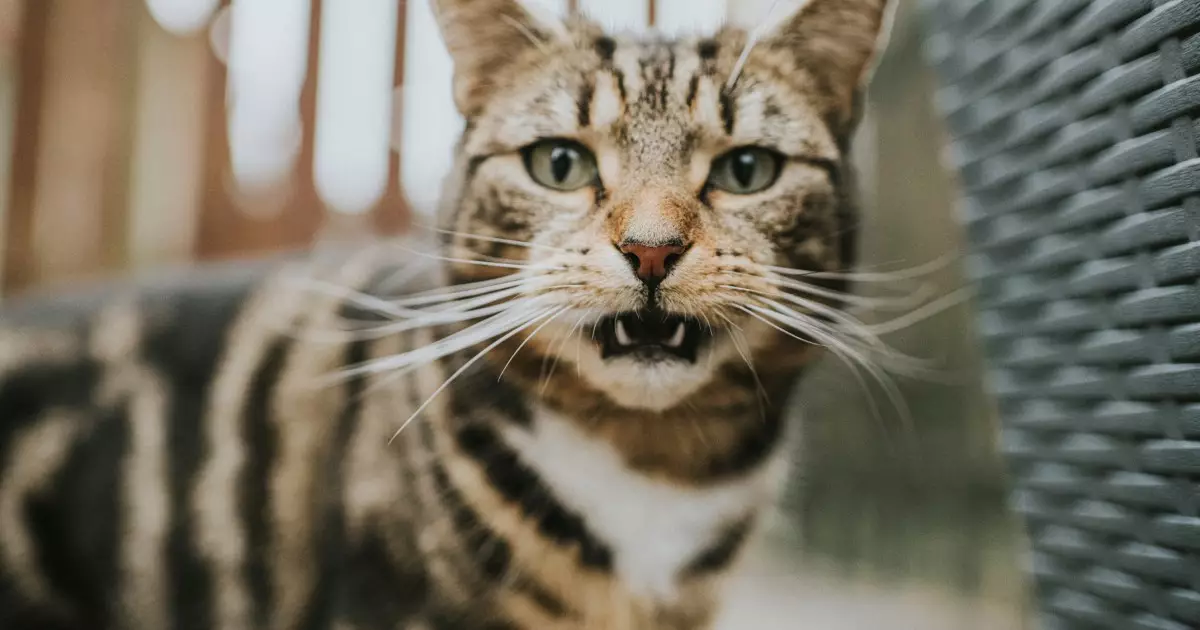For a long time, cats have been unfairly labeled as aloof and unenthusiastic creatures, especially when contrasted with the overtly exuberant nature of dogs. This stereotype persists largely due to a lack of understanding of how cats communicate their feelings and establish social connections. Contrary to this portrayal, recent research sheds light on the intricate emotional landscape of our feline companions, revealing that they display a rich array of 276 unique facial expressions. This study aims to not only highlight the depth of emotional communication among cats but also to educate cat owners and enthusiasts about the underlying social behaviors that often go unnoticed.
In an innovative study published in the journal *Behavioral Processes*, researcher Lauren Scott observed interactions among a group of 53 domestic shorthair cats over the course of a year at a cat café in Los Angeles. This naturalistic approach allowed Scott to capture 194 minutes of footage detailing the subtleties of feline interaction. By examining the facial movements of the cats, Scott and her colleague, evolutionary psychologist Brittany N. Florkiewicz, were able to categorize behaviors that signify various emotions. The findings, which reveal that cats possess far more facial movements than previously acknowledged, underscore the need for a shift in how we interpret feline behavior.
The study identifies a complex communication system executed through 26 distinct facial movements, which include changes in ear position, blinks, and even the movement of whiskers. Although humans have roughly 44 facial expressions and dogs 27, cats exhibit a staggering 276 variations, demonstrating a sophisticated method of conveying feelings. The categorization of these expressions showed that approximately 45% were friendly, 37% exhibited aggression, and 18% were classified as ambiguous. This data suggests that when analyzing a cat’s emotional state, one must pay close attention to the positioning of their ears, eyes, and whiskers, as well as their mouth movements.
Understanding these new findings can revolutionize the way pet owners interact with their cats. As Florkiewicz elaborates, the physical cues emitted by a cat provide essential information regarding their mood and willingness to engage. For instance, direct ear and whisker positioning typically indicates friendliness, while retraction of these features may indicate a more aggressive state. The ability to interpret these signals may lead to more harmonious relationships between cats and their owners, as well as among multiple pets within a household.
Moreover, understanding the emotional nuances of cat behavior can guide potential cat adopters to find pets that may vibe well with their existing narrative. This research underscores a compelling argument for adopting cats based on emotional compatibility rather than mere aesthetics or breed. Initiatives like these could even spark the development of technological solutions—such as apps designed to decode feline facial expressions and deconstruct their silent language, enhancing the pet ownership experience.
Despite these promising insights, the researchers acknowledge that their study does not definitively explain what each of the 276 expressions signifies. Future research is essential to delve deeper into the contexts and subtleties of these expressions. Understanding how certain interactions lead to specific emotional responses will not only expand our knowledge of feline behavior but will also enhance the human-feline bond.
Cats are far more emotionally complex than many give them credit for. Their vast array of facial expressions serves as a silent, yet expressive, form of communication that has yet to be fully explored. By challenging outdated perceptions and embracing the science behind feline behavior, we can cultivate a more empathetic understanding of these magnificent creatures, paving the way for better companionship between cats and their humans.
